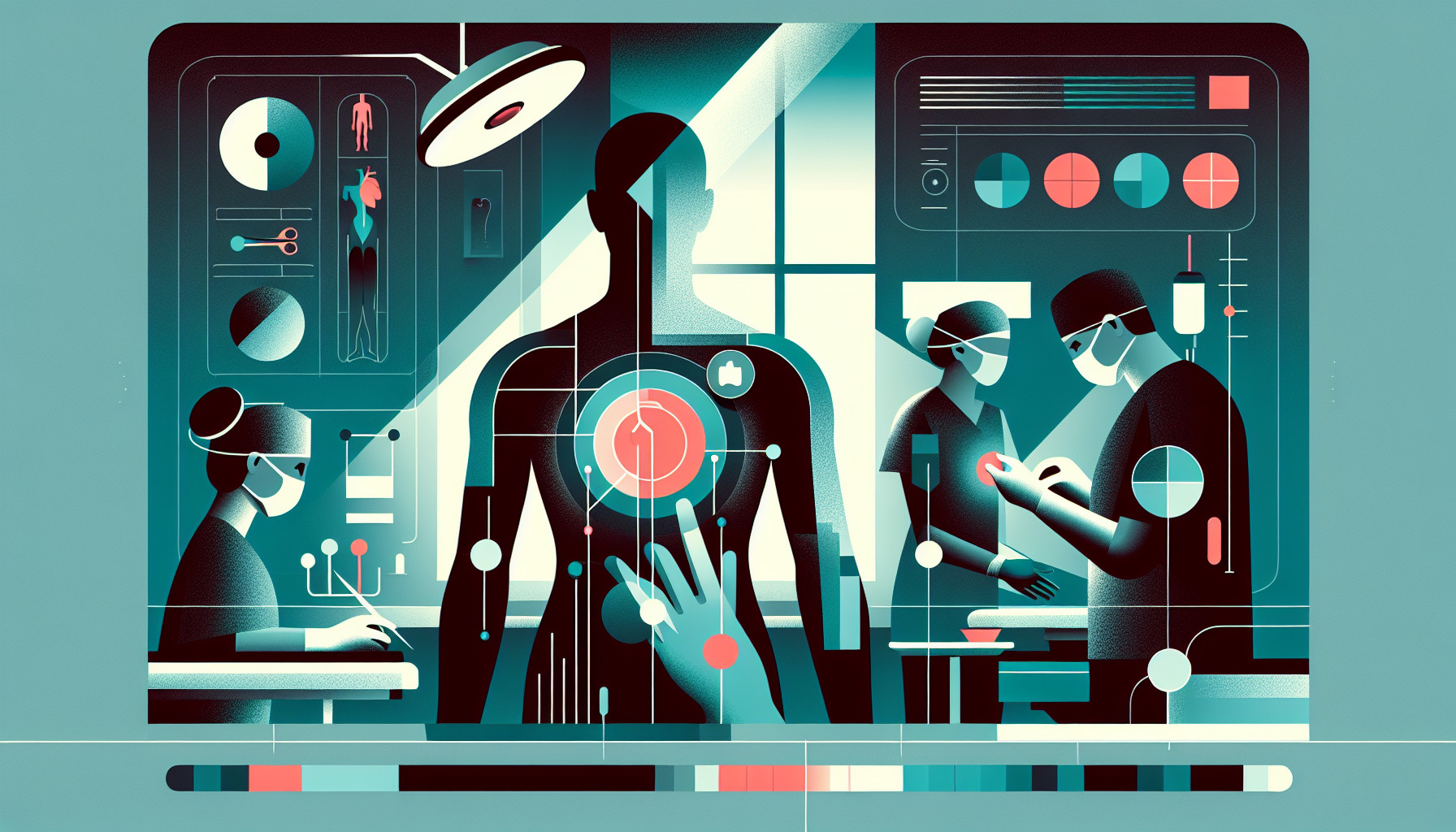Our Summary
This study looks at the use of a treatment called intralesional photodynamic therapy (i-PDT) for patients with complex anal fistulas, which are abnormal connections between the rectum and skin. The researchers wanted to confirm if this treatment is effective and to analyze the results.
The study involved patients who were treated between January 2016 and December 2018. The treatment involved injecting a special gel into the fistula, then sealing off the openings. After a waiting period, the fistula was exposed to a red laser.
In total, 49 patients were included in the study. Most of the patients had previously undergone surgery for the fistula. Before the treatment, about 10% of patients experienced some degree of incontinence. There were no major complications reported during the procedure. One patient experienced phototoxicity, or an adverse reaction to light. Two patients reported having a fever in the first two days after the procedure.
At the end of the follow-up period, about 65% of patients showed total healing. Importantly, no new cases of incontinence were reported after the treatment.
The study concludes that i-PDT could be a good alternative to surgery for patients with complex anal fistulas.
FAQs
- What is intralesional photodynamic therapy (i-PDT) and how is it used in the treatment of anal fistulas?
- What were the results and side effects reported in the study of i-PDT for anal fistulas treatment?
- Could i-PDT be considered as an alternative to surgery for patients with complex anal fistulas, based on the study’s findings?
Doctor’s Tip
In discussing anal fistula surgery with a patient, a doctor may advise the following tips:
Follow all pre-operative instructions provided by your healthcare provider, such as fasting before surgery or taking prescribed medications.
After surgery, follow all post-operative care instructions carefully to aid in the healing process and reduce the risk of complications.
Pay attention to any signs of infection, such as increased pain, swelling, redness, or discharge from the surgical site, and contact your healthcare provider immediately if you notice any concerning symptoms.
Maintain good hygiene in the anal area to prevent infection, such as keeping the area clean and dry, and avoiding tight clothing that could irritate the surgical site.
Attend all follow-up appointments with your healthcare provider to monitor your healing progress and address any concerns or issues that may arise.
Suitable For
Typically, patients with complex anal fistulas who have not had success with other treatments, such as medications or previous surgeries, may be recommended anal fistula surgery. Additionally, patients who are experiencing symptoms such as pain, swelling, discharge, or incontinence related to their anal fistula may also be candidates for surgery.
Timeline
Timeline of patient experience before and after anal fistula surgery:
Before surgery:
- Patient experiences symptoms such as pain, swelling, discharge, and possibly incontinence.
- Patient consults with a healthcare provider who diagnoses the anal fistula and recommends surgery.
- Patient undergoes pre-operative tests and preparations.
- Patient may experience anxiety and concerns about the surgery and recovery process.
During surgery:
- Patient undergoes the surgical procedure to treat the anal fistula.
- Surgeon removes the infected tissue and creates a new pathway for drainage.
- Surgery typically lasts 30 minutes to 1 hour under general anesthesia.
After surgery:
- Patient may experience pain, swelling, and discomfort in the anal region.
- Patient is prescribed pain medication and antibiotics to prevent infection.
- Patient is advised to follow a specific diet and hygiene regimen to promote healing.
- Patient undergoes follow-up appointments with the surgeon to monitor healing progress.
- Patient may experience complications such as infection, bleeding, or recurrence of the fistula.
- Patient gradually resumes normal activities and may need to make dietary and lifestyle changes to prevent future occurrences.
Overall, the timeline of the patient experience before and after anal fistula surgery involves diagnosis, surgery, recovery, and follow-up care to ensure successful treatment and healing.
What to Ask Your Doctor
- What is the success rate of intralesional photodynamic therapy (i-PDT) for treating anal fistulas?
- What are the potential risks and complications associated with i-PDT for anal fistula treatment?
- How does i-PDT compare to traditional surgical options for treating anal fistulas?
- What is the recovery process like after undergoing i-PDT for anal fistula treatment?
- Are there any lifestyle changes or restrictions that need to be followed post-treatment?
- How long does it usually take for patients to see results from i-PDT for anal fistula treatment?
- Are there any factors that may affect the effectiveness of i-PDT for treating anal fistulas?
- What is the cost associated with i-PDT compared to traditional surgical options for anal fistula treatment?
- Are there any long-term effects or considerations to be aware of after undergoing i-PDT for anal fistula treatment?
- What follow-up care or monitoring is recommended after receiving i-PDT for anal fistula treatment?
Reference
Authors: Arroyo A, Sánchez-Guillén L, Parra PA, García-Catalá L, Peña-Ros E, Ferrer-Márquez M, Nofuentes Riera C, Barber-Valles X, Romero-Simó M. Journal: Lasers Surg Med. 2020 Jul;52(6):503-508. doi: 10.1002/lsm.23162. Epub 2019 Sep 19. PMID: 31536149
